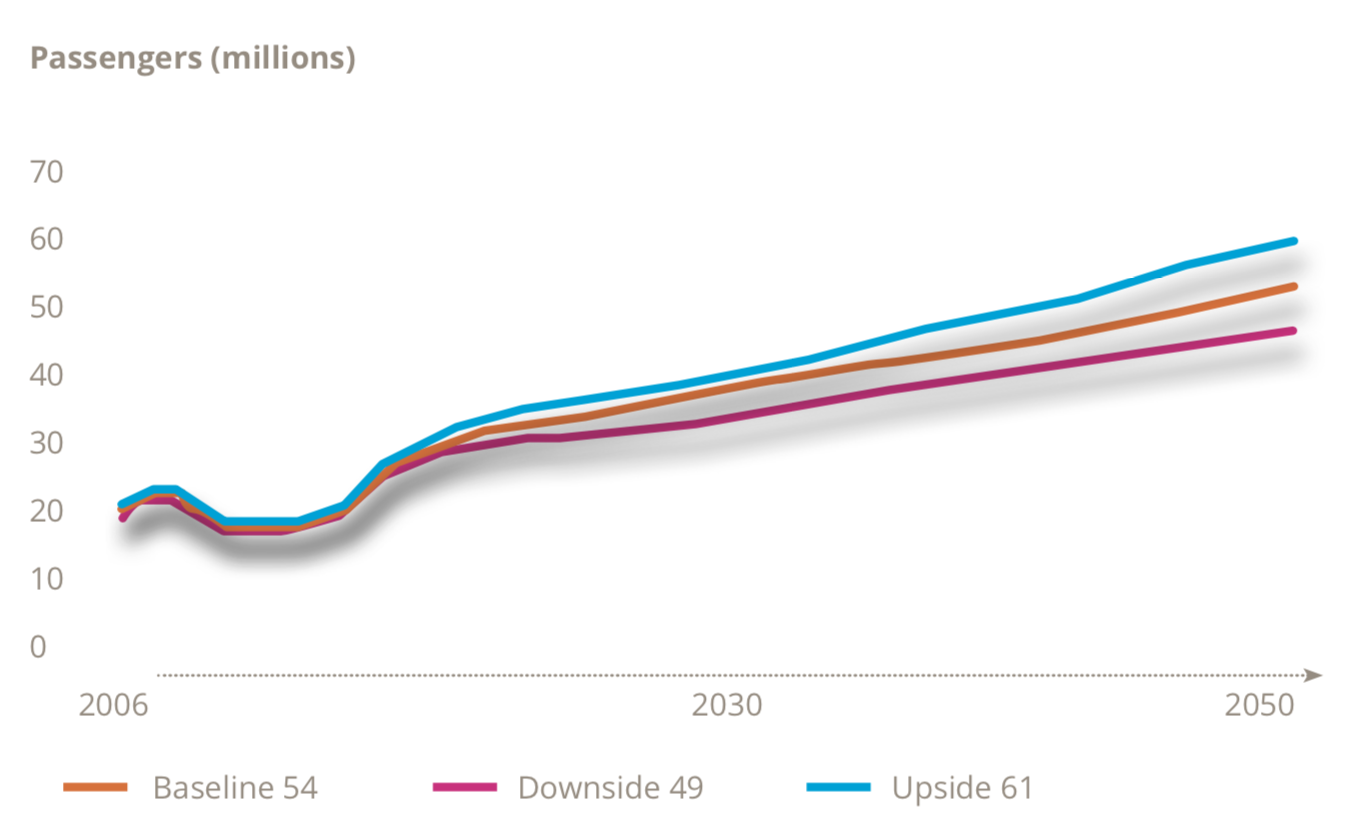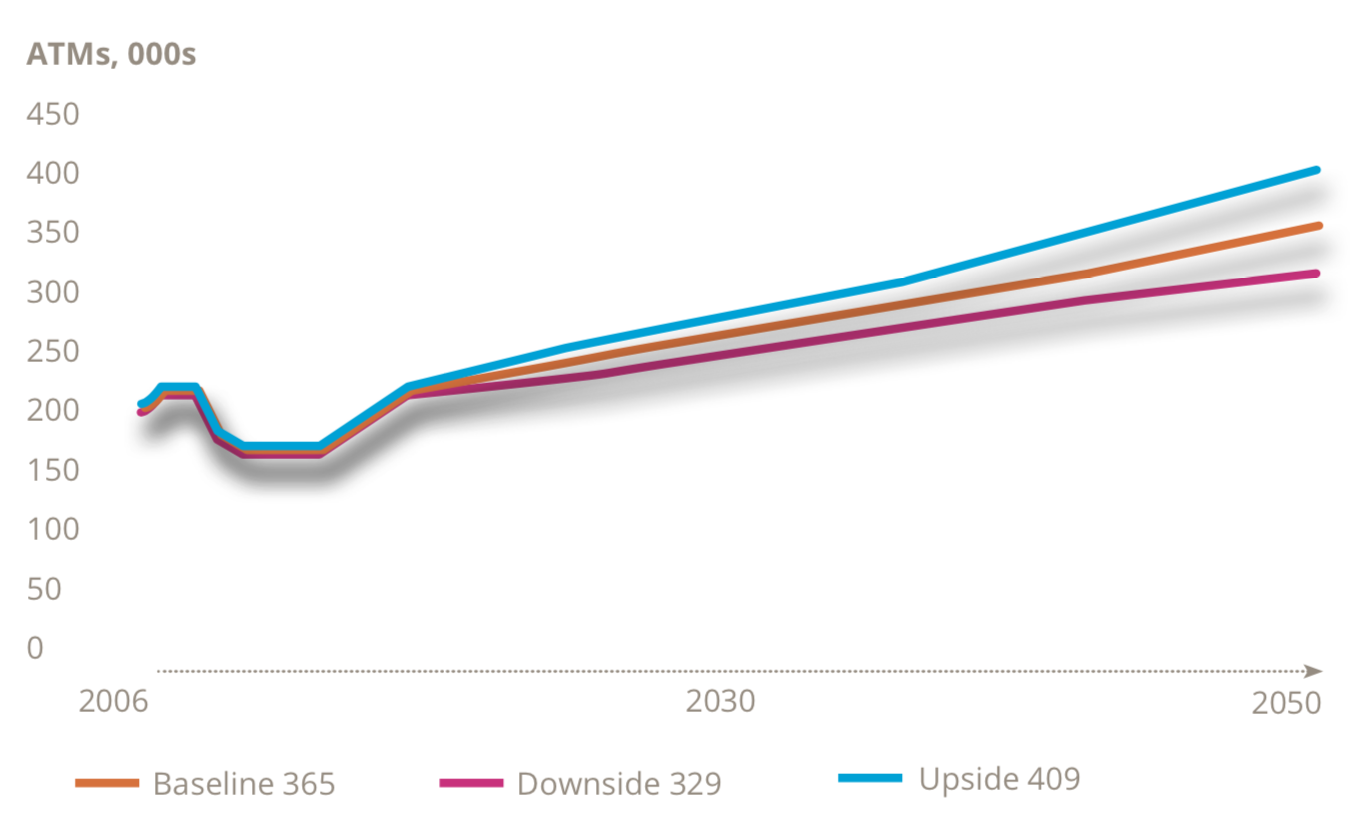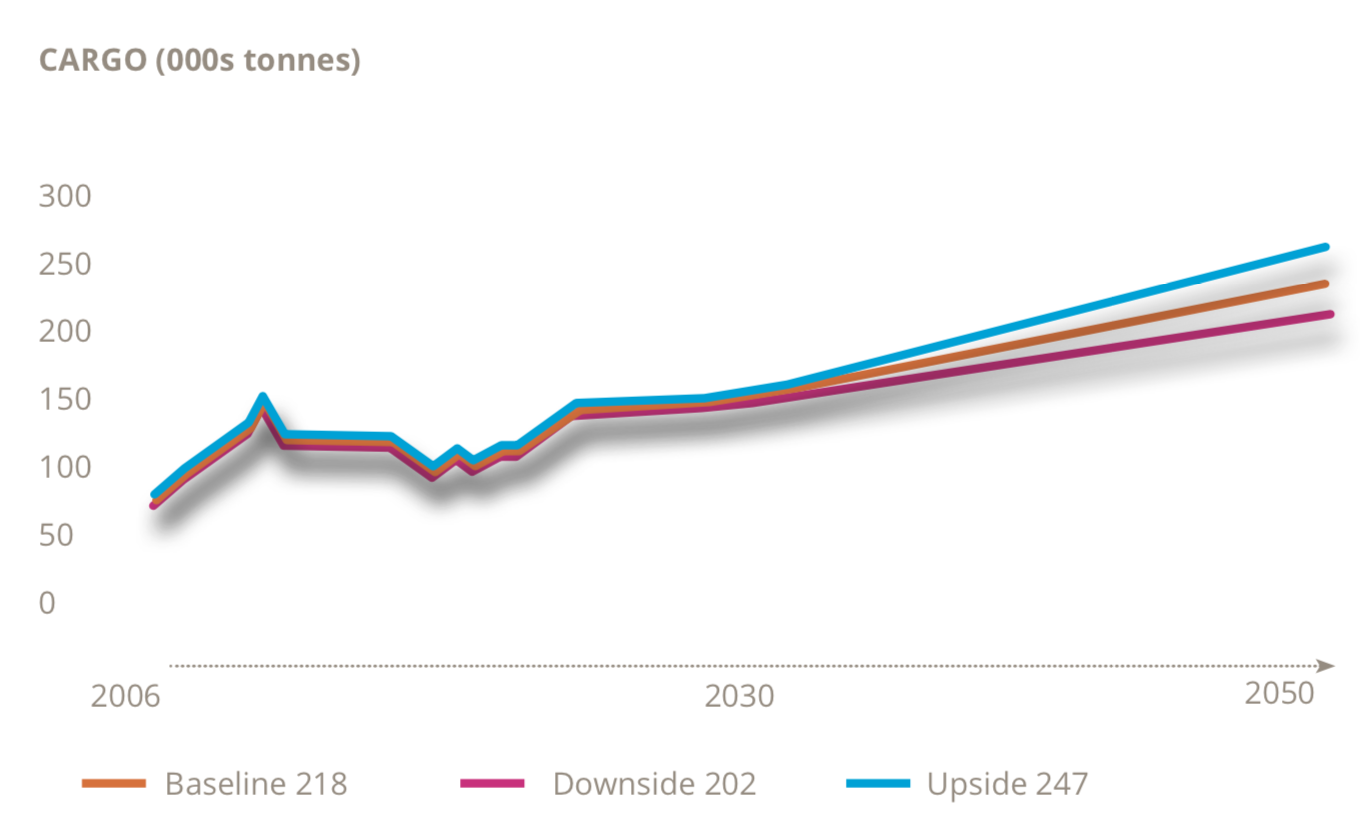3.1 Forecasts
3.1.1 PASSENGER FORECASTS
In 2016, Dublin Airport handled 85 percent of the Country’s total passenger traffic. Three differing types of passenger form the basis for the projected figures in the DTTAS Review. These are origin- destination passengers, transfer passengers and transit passengers.
An origin-destination passenger is one who starts or finishes their journey in Dublin.
Transfer passengers are those who make a connecting flight at Dublin Airport to reach their destination. A transfer passenger will be counted twice on each trip. The review indicates that Dublin Airport handled 1.2 million transfer passengers in 2016 of which about half transferred to a transatlantic flight and this figure is expected to grow.32
Transit passengers are those who fly in and out of an airport without changing aircraft. Typically, transit passengers stop at an intermediary airport for the purposes of refuelling the aircraft and do not disembark. Transit passengers are not counted as a terminal passenger and therefore are not included in terminal capacity assessment that forms part of the DTTAS Review.33
The DTTAS Review sets out the Baseline, Upside and Downside forecasts for passengers for Dublin Airport to 2050. The projected passenger figures for 2030 are extrapolated from the DTTAS Review. These are set out in Figure 3.1.

Source: DTTAS Review
Figure 3.1 - Dublin Passenger Scenario Forecasts
Figure 3.1 sets the Baseline passenger forecasts for Dublin at 40 million passengers per annum (mppa) by 2030 and 54 mppa by 2050. The downside scenario forecast in the DTTAS Review simulates two near term global risks scenarios: a “cliff-edge” Brexit leading to WTO trading arrangements between the UK and EU and a more protectionist attitude towards international trade and investment by the US. These factors are compounded by weaker demographic growth in Ireland and higher oil prices. Under this scenario Dublin’s passenger growth averages 1.7 percent per year, with passenger numbers reaching 36mppa by 2030 and 49mppa by 2050.
Under the upside scenario the DTTAS Review simulates the effects of a positive near-term boost to Ireland’s economy as part of the global upturn, together with three longer-term characteristics for on-going improvements in outlook, faster population growth, faster productivity growth, and greater trade openness. Under this scenario, Dublin is forecast to reach 42mppa by 2030 and 61mppa passengers by 2050.
3.1.2 AIR TRANSPORT MOVEMENT FORECASTS (ATM'S)
In terms of ATMs, the DTTAS Review baseline forecast shows an increase from 216,000 in 2016 to 265,000 (approx.) in 2030 and 365,000 by 2050. The methodology used makes assumptions about the average number of passengers carried per ATM to derive these movement figures, which in turn is a function of aircraft size.

Source: DTTAS Review
Figure 3.2 - Dublin ATM Forecasts to 2050
3.1.3 AIR CARGO FORECASTS
Ireland’s airports handled 148,000 tonnes of air cargo in 2016, about 20% lower than the historical peak of 188,000 tonnes in 2011. Dublin Airport handled 134,000 tonnes of cargo in 2016, about 90 percent of all air cargo arriving and departing Ireland’s airports. The DTTAS Review used similar econometric modelling to their passenger analysis to forecast air cargo volumes for Ireland. The output suggests that air cargo volumes (measured in tonnes) to and from Ireland could grow by an average of 1.4 percent per year for 2017 to 2050, compared to a historical average of 1.9 percent for 1997 to 2016. With Dublin’s market share expected to remain constant, this produces a conservative forecast that air cargo at Dublin could increase as set out in Figure 3.3 to between 150,000 – 170,000 tonnes in 2030 to 202,000 – 247,000 tonnes in 2050.

Source: DTTAS Review
Figure 3.3 - Dublin Air Cargo Forecast to 2050
3.1.4 FORECASTS AND THE LOCAL AREA PLAN
- Passengers numbers are forecasted to reach 40 mppa.
- Air Transport Movement Forecasts (ATM’s) are forecasted to reach 265,000.
- Air Cargo is forecasted to reach to between 150,000 and 170,000 tonnes.
It is important to acknowledge that the forecasts and additional capacity needs set out in the DTTAS Review are an indicator of the degree of shortfall in capacity. The LAP utilises the figures as set out in the DTTAS Review, including the baseline figure of 40 mppa by 2030, along with upside and downside forecasts, to provide the framework for development.
- 32 - Transfer passenger numbers increased by 18% to 1.8 million in 2018 - www.daa.ie.
- 33 - 240,000 passengers transited through Dublin in 2018 - www.daa.ie.